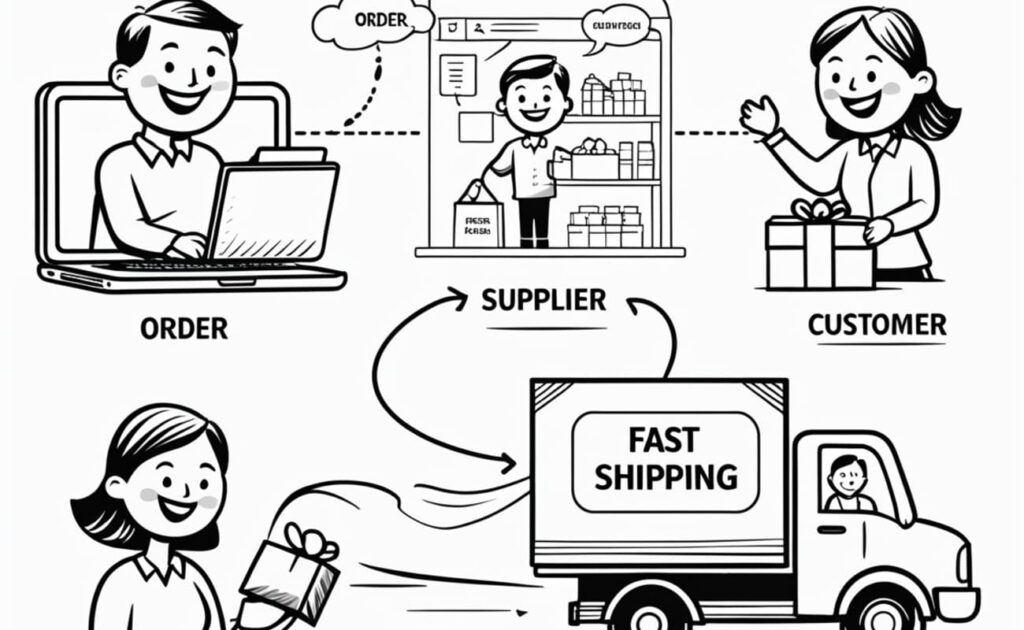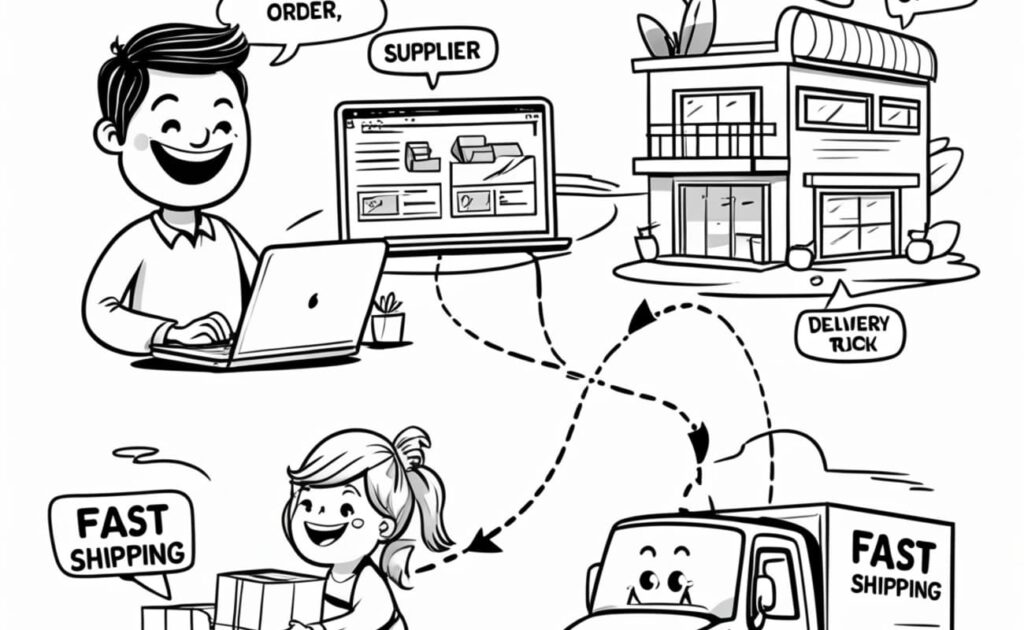If you are a young entrepreneur or an experienced retailer looking to scale your online business, knowing how to master dropshipping fulfillment can be a game changer. In today’s fast-paced e-commerce world, the success of your operations doesn’t solely depend on a trendy store design or viral social media presence—it hinges on a robust logistics strategy. This article dives deep into the critical challenges of dropshipping logistics, such as shipping delays, warehouse errors, and returns management, while unveiling innovative solutions that can transform your business.
Understanding the Landscape of Dropshipping Fulfillment
The world of dropshipping fulfillment is dynamic and multifaceted. Many retailers face common hurdles like delayed order processing, mismanaged inventory, and inefficient returns handling. Interestingly, many of these issues can be alleviated by choosing the right fulfillment partner—a reliable provider that meets specific criteria such as processing orders within 24 hours and offering bilingual support. In other words, the essence of effective dropshipping fulfillment lies in harmonizing quality supplier selection with advanced automation tools.
As e-commerce continues to evolve, so do the customer expectations for swift and error-free delivery. Imagine a scenario where a minor error at the warehouse costs you a loyal customer or where shipping delays lead to a flood of negative reviews. Therefore, understanding the complex interplay of logistics, technology, and supplier reliability forms the foundation of a robust fulfillment model.
Key Challenges in Dropshipping Logistics
Even with the best intentions, many online sellers face challenges that disrupt the smooth flow of orders. A common issue is delayed shipping times that can tarnish your brand’s reputation. For instance, manual errors during order processing or miscommunications between the store and the supplier can lead to orders being dispatched late, causing frustration among customers. Moreover, inefficiencies in inventory management can lead to overselling or understocking, both of which are costly mistakes.
Another challenge is the management of returns. In a traditional retail model, returns are managed in-house; however, dropshipping forces you to rely on third-party suppliers to handle these processes promptly. Without a streamlined system for processing returns, you may face additional logistical complications that affect your overall service quality.
All these challenges point toward one critical insight: improved automation and the selection of a trusted fulfillment partner are not optional but necessary for success. Many successful businesses have pivoted their strategies by adopting integration tools and software designed to reduce human errors and accelerate processing times.

Embracing Innovative Strategies for Seamless Operations
Adopting modern automation tools is one of the most effective ways to combat the logistics challenges inherent in dropshipping. For example, integrating software such as DSers with AliExpress can significantly reduce manual errors by automating order management and updating inventory in real time. Such a system not only limits the possibility of human error but also ensures that orders are fulfilled swiftly, reducing the average processing time to less than 24 hours.
Furthermore, transitioning to more dependable methods of dropshipping fulfillment means that you can reduce manual errors by as much as 40 percent. This improvement is pivotal—not only does it enhance customer satisfaction by providing reliable shipping information, but it also empowers you to concentrate on scaling your business. Essentially, these integrated automation systems make your fulfillment process as smooth as silk, aligning with current consumer expectations for speed and efficiency.
Choosing the Right Partner: Reliable Supplier Metrics
Partnering with the right dropshipping fulfillment companies is crucial. When selecting a fulfillment partner, you need to consider criteria such as a guaranteed processing time (ideally under 24 hours) and robust bilingual support to cater to an international audience. Suppliers with these attributes help mitigate common dropshipping pitfalls while ensuring clarity and efficiency in every transaction.
Let’s take a closer look at how these criteria benefit your business:
| Criteria | Impact on Fulfillment |
|---|---|
| Order Processing Time ≤24 Hours | Minimizes shipping delays and improves customer satisfaction. |
| Bilingual Support | Ensures clear communication and smoother international transactions. |
| Automation Integration | Reduces manual processing errors by up to 40%. |
This table underscores key standards that a top-notch fulfillment partner should meet. With these metrics in mind, you can sift through various providers—whether you are examining domestic options or looking abroad—and ultimately choose the one that will help you boost profits fast.
Integrating Automation and Software Solutions
Technology plays a pivotal role in streamlining dropshipping fulfillment. Think about the last time you manually entered orders or updated inventory levels—tedious tasks that invite human error. By investing in order management systems that automatically synchronize with your online store, you not only save time but also drastically reduce inaccuracies.
For instance, many Shopify store owners have discovered that integrating apps like DSers can transform their fulfillment process. If you’re wondering, “How to fulfill dropshipping orders on Shopify?” the answer lies in leveraging these software solutions. Not only do they automatically process orders, but they also help manage communication with suppliers, ensuring that order details are transmitted accurately and promptly.
When you incorporate these tools into your operations, you also alleviate pressure on your team, enabling them to focus on more strategic aspects of the business. This enhancement in operational efficiency often translates into reduced shipping times and improved overall customer experience.

Dropshipping Fulfillment on Shopify: A Closer Look
The Shopify platform is renowned for its user-friendly interface and a rich ecosystem of applications designed to assist with various aspects of e-commerce. For retailers looking to optimize their dropshipping fulfillment, understanding how to fulfill dropshipping orders on Shopify is essential. Utilizing Shopify’s integrated solutions means that you can automate many of your fulfillment tasks, allowing you to manage and track orders with ease.
Moreover, Shopify’s streamlined order processing system is a boon for businesses that need to deliver quality service quickly. By combining Shopify’s capabilities with automation apps, sellers experience fewer delays and errors, providing a smoother buying journey for customers.
If you’re interested in discovering more about effective tools for your online store, check out this insightful article on best shopify dropshipping apps, which details several top-notch options to further enhance your fulfillment process.
Navigating China Dropshipping Fulfillment
In terms of sourcing products and fast delivery, dropshippers have mostly relied on suppliers that are in China. However, “china dropshipping fulfillment” is not merely obtaining inexpensive merchandise. It involves being aware of local shipping traditions, achieving good shipping terms, and ensuring quality control. Most stores have wondered if overseas fulfillment can assist in meeting international consumers’ stringent demands. Yes, it is the answer, provided you are working with the right supplier and using high-grade automation tools.
Businesses that are utilizing Chinese-based fulfillment have discovered that the implementation of real-time tracking software and automated order processing will be able to greatly reduce the natural lag involved in shipping internationally. In most cases, bilingual customer service has allowed effective communication with Chinese suppliers, allowing for smoother transactions and fewer misunderstandings. Implementing such strategies, you are able to remain competitive in the global market while perhaps reducing overall shipping costs.
A Real-World Case Study: Automation in Action
Consider the case of one successful e-retailer facing typical frustrations with sluggish shipping and continuous human error. Initially, order processing was taking an average of 14 days, while customer complaints were at a record high. Through adding a robust automation system that connected their site with DSers and another advanced order management system, the store reduced its delivery time to 5 days. This remarkable makeover wasn’t a coincidence of fate—it was the result of meticulous supplier choice (with under 24-hour processing time and bi-lingual support) and the strategic use of automation software.
This retailer’s tale serves a valuable lesson: even if you do experience difficulties with dropshipping fulfillment, with the right mix of technology and vendor relationships, you can achieve dramatic efficiency and customer satisfaction improvements. The transformation, in this case, translated into fewer returns, a 40% reduction in human errors, and, in the end, a tremendous increase in profits.
Conclusion: Mastering Dropshipping Fulfillment to Boost Profits
Replying to this, the secret to speeding up profits is to get a handle on dropshipping fulfillment—anything from mitigating logistical problems to applying advanced automation tools and optimizing the right providers. By familiarizing yourself with working things out and eliminating issues like slow shipping, inventory errors, and suboptimal returns management, you are placing the groundwork for smooth and efficient operation. In the process, remember the tips below and continue to fine-tune your strategy for optimal performance. Are you prepared to transform your fulfillment process and drive your business to new heights?
For additional resources and insights on optimizing your dropshipping operations, explore reputable sources such as the Shopify Dropshipping Blog to stay updated on the latest trends and tools available in the market.
Frequently Asked Questions (FAQ)
What are the best dropshipping fulfillment companies?
Many companies specialize in dropshipping fulfillment. The most reliable ones offer features like order processing within 24 hours, bilingual support, and robust automation integration to reduce manual errors. It is important to research providers and choose one that aligns with your specific needs and market requirements.
How can I fulfill dropshipping orders on Shopify?
Fulfilling dropshipping orders on Shopify involves installing and integrating dedicated fulfillment apps that automate order processing. Applications such as DSers can streamline your operations by synchronizing your store inventory with your supplier’s database, ensuring timely and error-free order fulfillment.
What should I consider when using China dropshipping fulfillment?
When working with China-based fulfillment, it is crucial to ensure that your suppliers can meet your quality and shipping standards. Look for providers with fast processing times, efficient tracking systems, and bilingual communication capabilities to minimize misunderstandings and delays.
How can automation reduce errors in dropshipping fulfillment?
Investing in automation software can significantly decrease manual errors by automating repetitive tasks. By linking your online store to sophisticated order management systems, you streamline the entire process from order placement to delivery, thereby reducing errors by up to 40%.
Why is supplier reliability essential for dropshipping success?
Supplier reliability is essential because it directly influences your shipping times, inventory accuracy, and customer satisfaction. A reputable supplier who processes orders within 24 hours and offers bilingual support ensures a smoother operation, allowing you to deliver on your promises and build trust with your customers.
